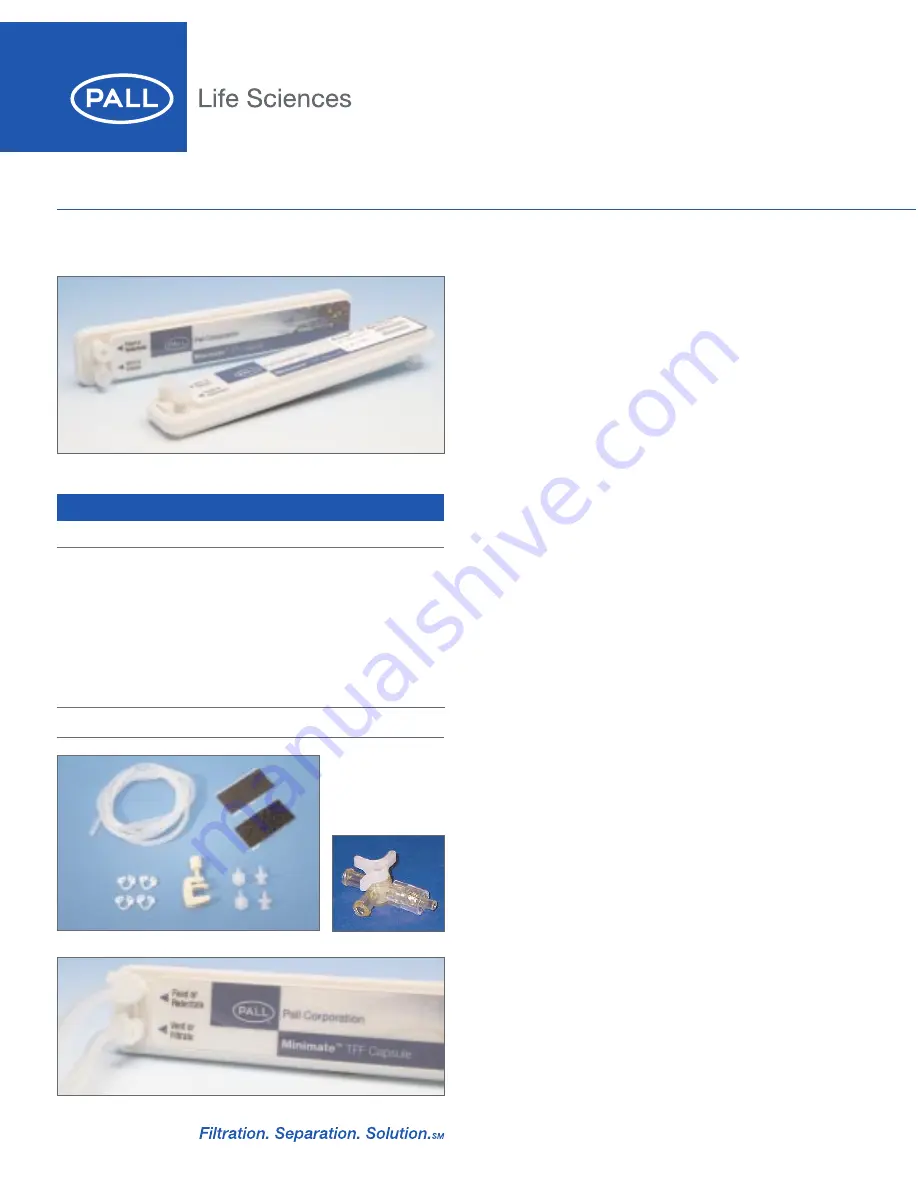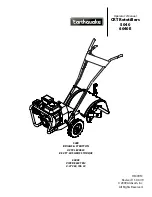
Minimate
™
TFF Capsule
Component Information
Part No.
Description
OAxxxC12
Minimate TFF Capsule
88216
Minimate Fitting Kit
Kit Contains:
A
Male luer to 3.2 mm (1/8") hose barb
B
Female luer to 3.2 mm(1/8") hose barb
C
3.2 mm (1/8") tubing
D
Tubing screw clamp
E
Tubing clamps
F
Adhesive strips (loop and hook)
FS700X06
3-port valves
(not supplied)
Assemble the Components
Installation
(Refer to schematic on reverse side)
1. Remove the caps from the feed and retentate ports of the
Minimate TFF capsule.
2. Screw a male-luer-to-hose-barb connector (included) into
the feed/retentate ports.
3. Cut a length of tubing long enough to reach from the
reservoir, through the pump head to the capsule.
4. Connect the tubing to the hose-barb on one of the feed
ports. Install the tubing in the pump head. Put the other
end of the tubing into the reservoir.
5. Cut another piece of tubing, long enough to return from
the retentate port to the sample reservoir. Attach the tubing
to the retentate hose-barb and put the other end in the
reservoir. Place the retentate screw clamp on the retentate
tubing close to the retentate port (after the pressure gauge
if installed). Secure in place but do not tighten to restrict
the tubing.
6. Remove one of the filtrate caps. Choose port that is
highest in orientation. This allows air to be expelled from
the capsule.
7. Attach a female luer-to-hose-barb fitting to the filtrate port.
8. Cut a length of tubing long enough to reach from the
filtrate port to your filtrate collection vessel. Connect
the tubing to the filtrate hose barb.
9. Install a tubing clamp over each piece of tubing where it
connects to the hose barb. Pinch the clamp to tighten.
Notes:
1. Do not discard caps. They are required for storage.
2. Keep tubing lengths as short as possible to reduce
hold-up volume.
3. Feed and retentate ports are interchangeable. Depending
on the orientation of the capsule, choose the port that is
at the lowest elevation as the feed port. This allows for air
to be easily expelled when liquid is pumped through the
capsule.
4. If a pressure gauge or transducer is used, the feed or
retentate tubing connects to the pressure device, which
must then be connected to the feed or retentate ports.
5. Pall strongly recommends the use of pressure gauges or
transducers connected on both the feed and retentate
ports. If only one gauge is available, it should be used
on the feed port. The use of pressure gauges allows
accurate adjustment of feed pressures and provide for
better reproducibility between process runs. They also
help diagnose system problems.
Quick Start Guide
PN 88200
Minimate Fitting Kit
3-port valves
A
C
D
E
F
B




















